See First look: the interface for the general description of the SAMSON interface.
Workspace
SAMSON provides a number of various workspaces that modify the menu to better suit the needs and screen sizes.

Menu
The ribbon menu, located at the top of the interface, is composed of several menus depending on the currently chosen workspace. For example, in the Default workspace the following menus are present: Home, Edit, Select, Visualization, Interface, and Help.
Note: The menu changes depending on a workspace and for the same workspace may slightly differ on Windows, Linux, and Mac.
Below is the description of the menu for the Default workspace.
Home
The Home menu is used to manage Documents, access the default editors, manage simulators, and access favorite commands (including Apps):

Group Documents:
- File
- New: creates a new document with a user-defined name.
- Open...: shows a modal dialog to open a document. Files with extensions .sam or .samx correspond to entire SAMSON documents, whereas files with other extensions are imported into the current document.
- Fetch: fetch structures in PDB, mmTF, mmcif/pdbx formats from the RCSB Protein Data Bank.
- Save: shows a modal dialog to save data to a file. Selecting files with extensions .sam or .samx saves the entire active document to the file, whereas selecting a file with another extension saves the current selection to the file, or the entire document if nothing is selected.
- Save as...: same as Save, but with the possibility of saving to a different file, even if the document has already been saved.
- Save selection as...: same as Save as..., but saves only the currently selected nodes.
- Close: closes the active document.
- Recent: shows the list of recently opened files.
- Documents: switch between the opened Documents, the number indicates the number of opened Documents.
Group Embed:
- Embed files: shows a model dialog to choose one or more files that will be embedded in the active document.
- Embed folder: shows a model dialog to choose a folder that will be embedded in the active document.
Group Share:
- Publish: publishes a document on SAMSON Connect and provides you with a shareable link which you can share with others.
- Download: downloads a document shared with you using document's identifier or a shareable link.
Group Structures:
- Fetch: fetch structures in PDB, mmTF, mmcif/pdbx formats from the RCSB Protein Data Bank.
- Predict: predict a 3D structure of proteins using AlphaFold2, ESMFold, etc.
- Validate: validate a structure by removing alternate locations, non-standard residues, checking for clashes, bond lengths.
- Prepare: prepare a structure with options to remove alternate locations, ligands, water, ions, and add hydrogens.
Group Tools:
- Apps: contains all the apps available in your SAMSON installation. You can add more apps from SAMSON Connect - Marketplace.
Group AI:
- Assistant: shows/hides the SAMSON AI assistant.
Edit
The Edit menu is used to edit Documents:

Group History:
- Undo: undo an operation.
- Redo: redo an operation.
Group Clipboard:
- Cut: cut the selected part.
- Copy: copy the selected part to the clipboard.
- Paste: paste from the clipboard.
Group Add:
- Folder: add a folder to the active Document.
- Note: add a note to the active Document. You can put in a note any plain text or html information to store it with the document.
- Script: add a Python script to the active Document.
- Conformation: stores a conformation of selected nodes in the active Document.
Group Adjust:
- Add hydrogens: adjust hydrogens in the selection.
- Remove hydrogens: remove hydrogens from the selection.
Group Simulate:
- Freeze/Unfreeze: freezes or unfreezes selected atoms or all atoms in the document if the selection is empty.
- Minimize: run an interactive minimization.
- Add simulator...: add a simulator. Opens a window where you can set up a simulator - choose an interaction model and state updater.
- Start: starts a simulation or shows that a simulation is already running.
- Stop: stops a simulation or shows that a simulation is already stopped (there is no running simulation).
Select
The Select menu is used to perform various selections in Documents:

Group Operations:
 Find: opens a find window which allows you to do complex searches in the active Document.
Find: opens a find window which allows you to do complex searches in the active Document.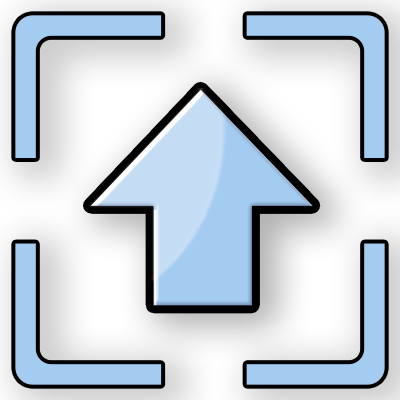 Parent: selects parent nodes of the selected nodes.
Parent: selects parent nodes of the selected nodes.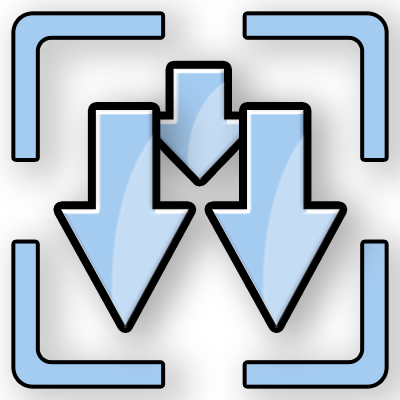 Descendants: selects all descendants of the selected nodes.
Descendants: selects all descendants of the selected nodes.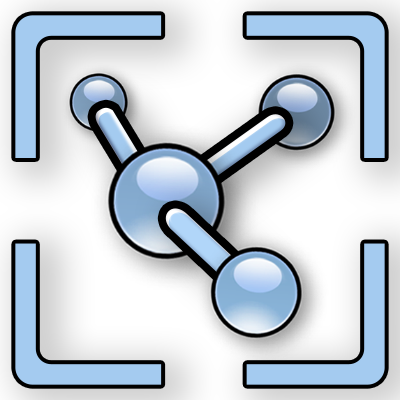 Connected: select atoms and bonds within the same connected components as the currently selected atoms.
Connected: select atoms and bonds within the same connected components as the currently selected atoms.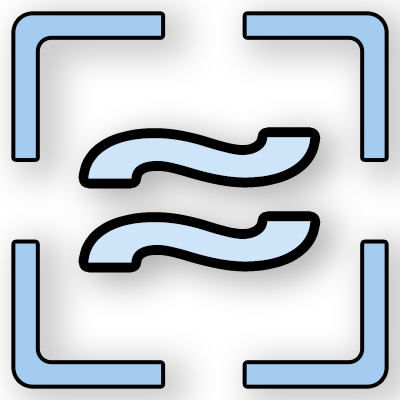 Similar: selects structures similar to the currently selected ones based on names and/or hierarchy.
Similar: selects structures similar to the currently selected ones based on names and/or hierarchy.- Invert: inverts the selection.
- Expand: expands the selection.
Group Structures: Actions related to selection based on various properties.
Group Add:
- Group: creates a group out of selected nodes.
Visualization
The Visualization menu is used to access visualization actions:

Group Capture:
- Trace: runs a path-tracing for better rendering.
- Save image: captures the viewport (the settings can be changed in the Preferences), or copy the capture in the clipboard.
- Save OBJ/glTF: saves the nodes that possible (meshes, etc) in an OBJ or glTF file.
Group Visibility: Actions related to changing the visibility of nodes.
Group Add:
- Label: add labels based on types of nodes or other properties.
- Material: colorize nodes.
- Visual model: select and add one of the default visual models: Ball and stick, Licorice, Lines, Van der Waals, Ribbons, Cartoon, Gaussian surface, Solvent Accessible Surface, Solvent Excluded Surface, etc; adds other visual model for the selection, or apply a visual preset.
- Camera: adds a camera in the active document.
- Light: adds a light in the active document.
- Presentation: adds a presentation in the active document.
Group Rendering:
- Options: various rendering options, can also be accessed in the Preferences.
- Anti-aliasing: changes the anti-aliasing rendering.
- Lighting: switch between lighting preferences.
- Shadows: switches on/off the shadows rendering.
- Ambient occlusion: switches on/off the screen-space ambient occlusion (SSAO) rendering.
- Bloom: switches on/off the bloom rendering.
- Blur: switches on/off the depth of field rendering.
- Fog: switches on/off the fog rendering.
- Pinhole: switches on/off the pinhole rendering.
- Silhouettes: switches on/off the silhouettes rendering.
Group Presets:
- Create a new render preset based on the current rendering settings.
- Rendering preset: switches between rendering presets (Default, High quality, Illustrative).
- Apply render presets available in all the opened documents.
Group Stereo:
- Stereo on/off: switches on/off stereo.
- Flip eyes: flips eyes in stereo.
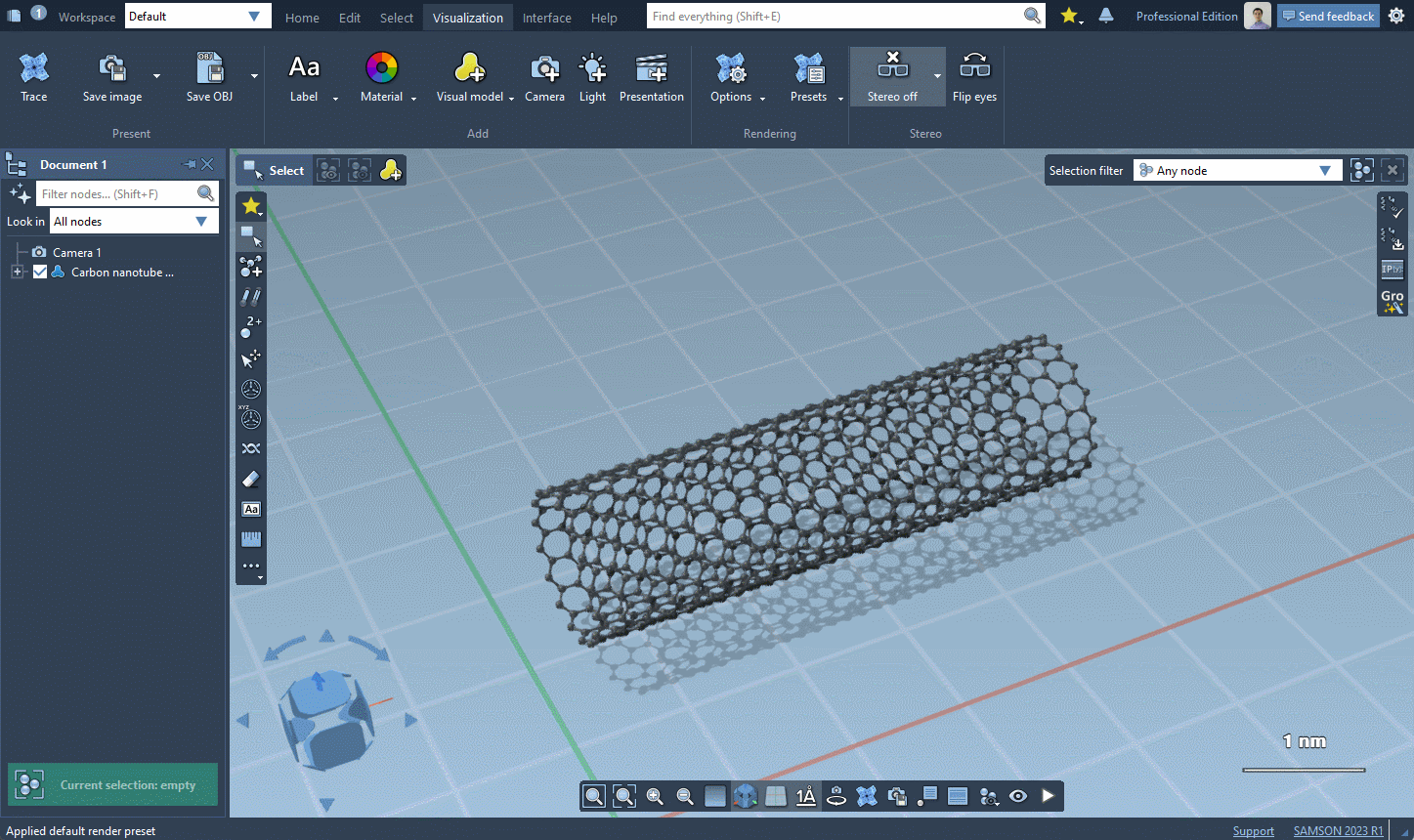
Interface
The Interface menu is used to manage SAMSON interface, update SAMSON, Preferences, and access logs:

Group Select:
- Assistant: shows/hides the SAMSON AI assistant.
- Document view: shows/hides the document view.
- Inspector: shows/hides the Inspector.
- History: shows/hides the history view.
- Assets: shows/hides the asset libraries window.
- Periodic table: shows/hides the periodic table.
- Job manager: shows/hides the job manager.
- Animator: shows/hides the Animator.
- Python Console: shows/hides the Python scripting console.
- Code editor: shows/hides the code editor.
Group Control:
- Hide interface: hides the SAMSON interface.
- Show log: shows the SAMSON log.
- Preferences: opens the preferences window.
Group Extend:
- Get documents: opens SAMSON Connect - Documents web-page.
- Add extensions: opens SAMSON Connect - Marketplace web-page.
Group Update:
- Update SAMSON: checks for SAMSON updates.
Help
The Help menu allows you to access various documentation, tutorials, and the forum.

Viewport menus
The menu in the viewport provides a quick access to the viewport associated commands, selection associated commands, favorite apps, all the editors with quick actions associated to the active editor.
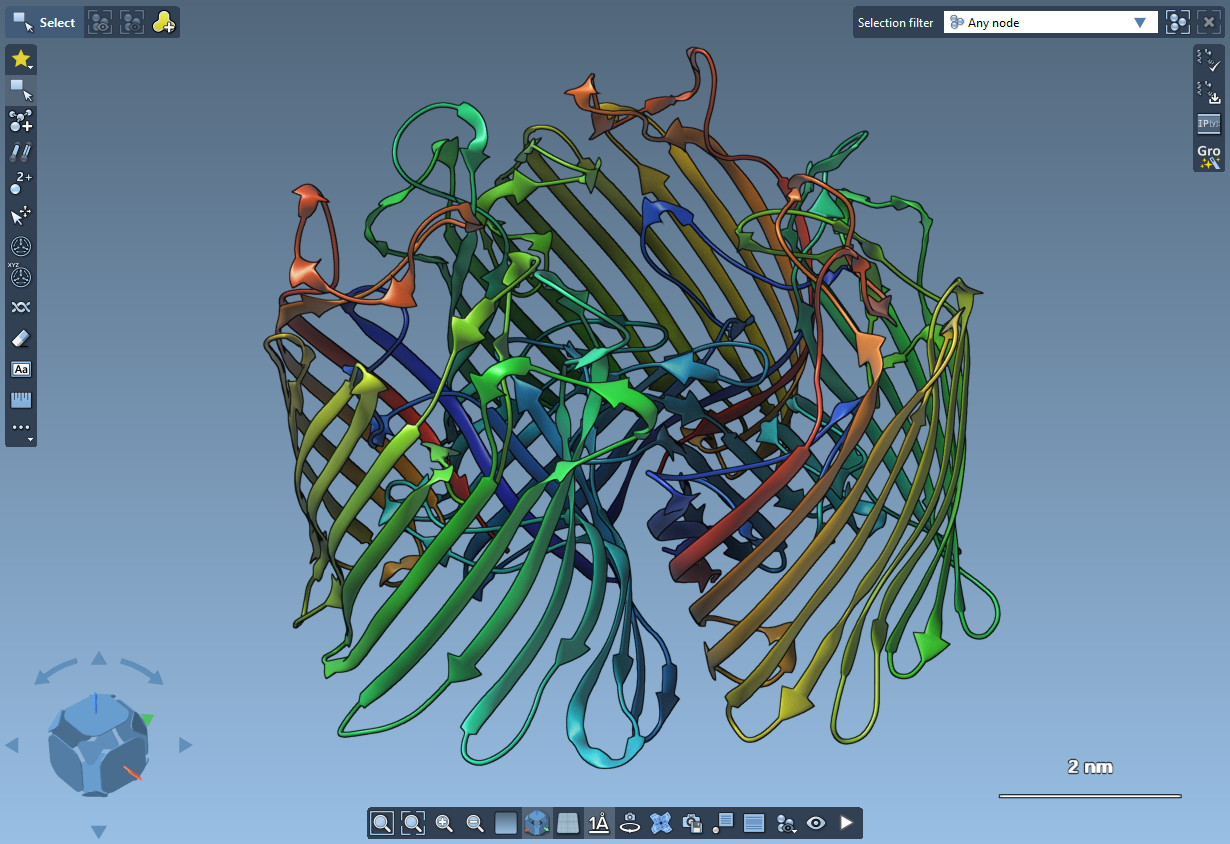
The menu at the bottom of the viewport has commands associated to the view, rendering, and the viewport.
The menu in the top-right corner of the viewport has commands associated to selection:
- Selection filter: allows you to specify types of nodes to which the selection should be applied.
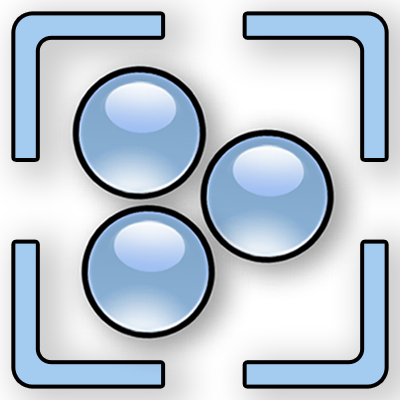 Select all: selects all selectable nodes in the active Document based on the current selection filter.
Select all: selects all selectable nodes in the active Document based on the current selection filter. Deselect all: deselects all selected nodes in the active Document.
Deselect all: deselects all selected nodes in the active Document.
The menu on the right side of the viewport provides a quick access to the favorite apps.
The menu on the left side of the viewport provides an access to all the editors and above it, in the top-left corner of the viewport, a quick access commands for the active editor.

The editor menu contains:
- Favorite: gives you a fast access to your favorite editors.
- Select: the rectangle selection editor.
- Add: add atoms, fragments, connect atoms with bonds.
- Bonds: change bond order.
- Charge: change atom order.
- Displace: the displace move editor.
- Local move: the move editor in the local coordinates (local to the selection).
- Global move: the move editor in the global XYZ coordinates.
- Erase: erase the selected nodes in the viewport.
- Label: add labels to atoms, bonds, residues and other nodes depending on the Selection filter.
- Measure: measure distances and angles between atoms.
- All: all the available editors. This menu shows all the editors installed in your SAMSON, subdivided into categories. You can add more editors from SAMSON Connect - Marketplace.

Viewport
The viewport is dedicated to showing the visual representation of molecules.

Find everything
The Find everything search box placed in the in the top-right corner allows you to easily find commands, apps, and editors and get help on them. It searches in names, tooltips, and shortcuts of commands, apps, and editors.
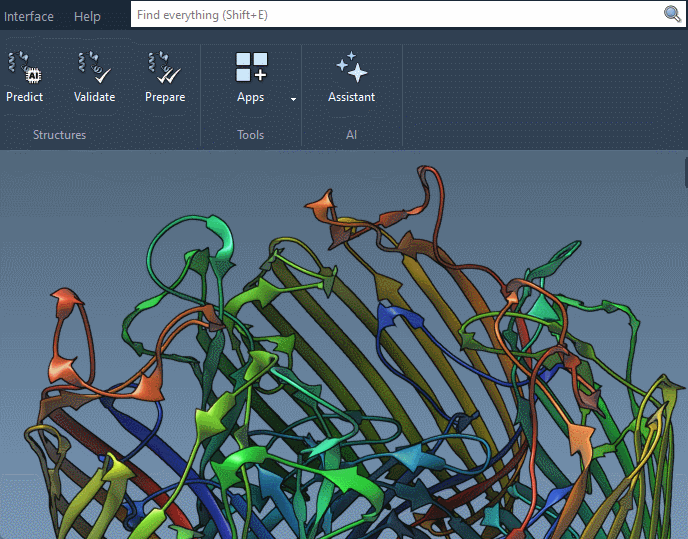
Document view
The Document view shows the hierarchical data graph of the active Document. You can open the document view by clicking on Interface > Document view or via shortcut Ctrl + 1 on Windows and Linux or Cmd⌘ + 1 on Mac.

In the document view you can, among other things:
- view the document's structure
- show/hide nodes
- select nodes in the document
- filter the nodes using Node Specification Language and names of the nodes via Filter nodes...
- change the documents structure, e.g. by drag-and-dropping nodes
- apply specialized actions on nodes via their context menu and context toolbar

You can simultaneously have several Documents opened in SAMSON, however, only one Document is active at any given time - the one you see in the document view. Having several Documents is useful, for example, when you want to do different tasks with different molecules or copy structures from one document to another. To switch between Documents, click on the Documents list in the top-left corner of the menu, or Home > Documents, or use Ctrl / Cmd⌘ + Tab or Ctrl / Cmd⌘ + Shift + Tab shortcuts. You can also see there the number of opened documents.
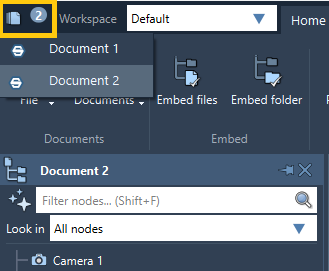
See also: Document, node types.
History
The History shows a history of undoable operations, by clicking on any of them you may return to the associated state in the history.
To open the History click on Interface menu > History or via shortcut Ctrl + 3 on Windows and Linux or Cmd⌘ + 3 on Mac.
Important: Not all the operations are undoable, if in between of undoable operations you did operations which are not undoable it might not be possible for SAMSON to properly undo operations, which may result in a loss of data.
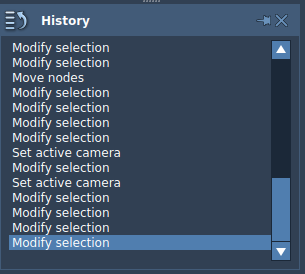
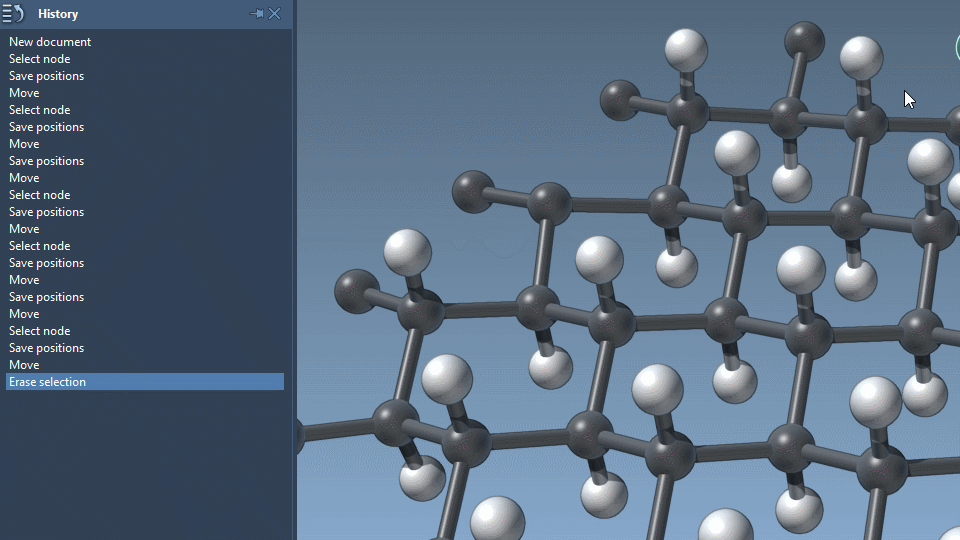
See also: History: Undo and redo
Inspector
The Inspector provides a possibility to view and edit the properties of the selected nodes.
To open the Inspector, click on Interface menu > Inspector or press Ctrl + 2 on Windows and Linux or Cmd⌘ + 2 on Mac.
Important: The Inspector inspects all the selected nodes and edits all the selected nodes.
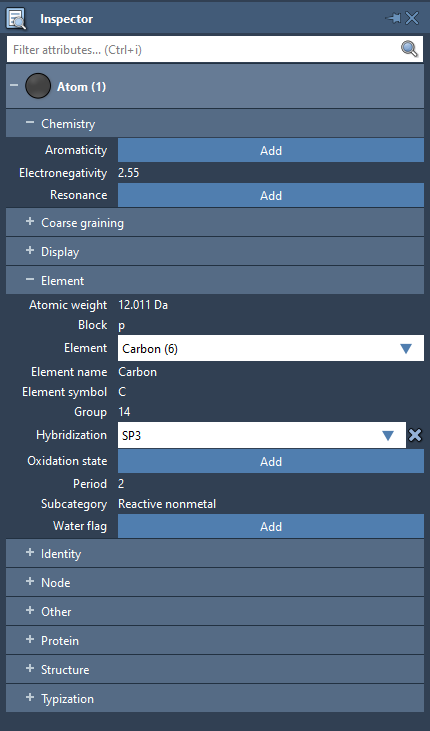
You can use the filter to see matching attributes only.


See also: Inspecting
Asset Browser
The Asset Browser gathers the assets included by default in SAMSON together with the assets you can obtain from SAMSON Connect.
To open the Asset Browser, click on Interface menu > Assets or press Ctrl + 4 on Windows and Linux or Cmd⌘ + 4 on Mac.
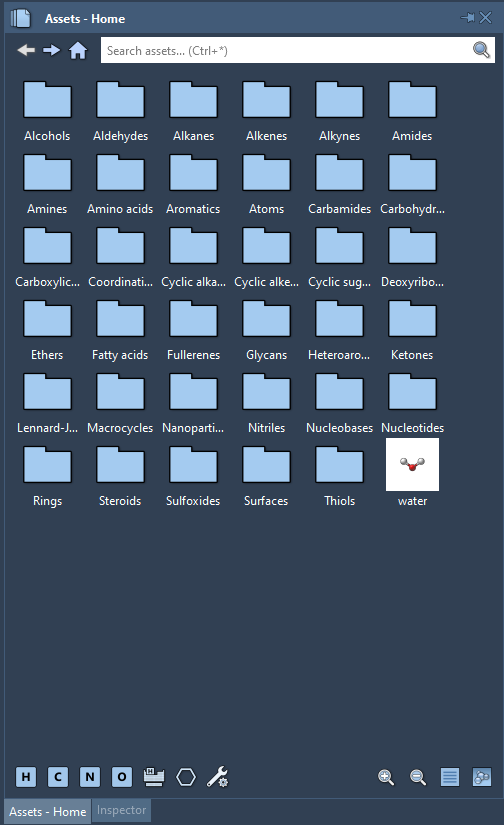
See also: Building molecules
Periodic Table
The Periodic table shows the periodic table and can be used to build and modify molecules - simply click on an atom and you will be switched to the Add editor mode.
To open the Periodic table, click on Interface menu > Periodic table or press Ctrl + 5 on Windows and Linux or Cmd⌘ + 5 on Mac.
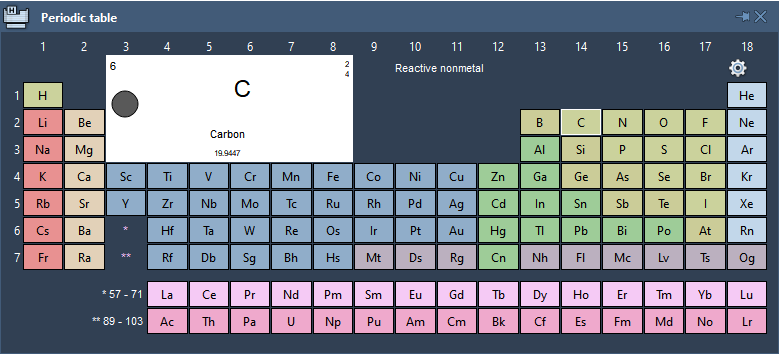
See also: Building molecules
Job Manager
The Job manager provides the possibility to manage jobs launched in the Cloud:
To open the Job manager, click on Interface menu > Job manager or press Ctrl + 6 on Windows and Linux or Cmd⌘ + 6 on Mac.
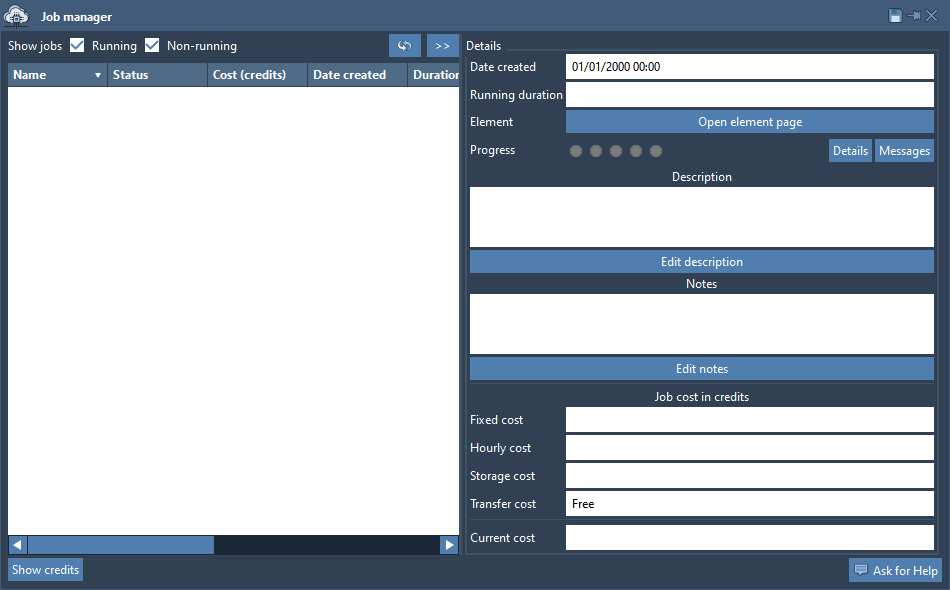
Animator
The Animator provides a possibility to view and edit presentations, add and modify animation effects.
To open the Animator, click on Interface menu > Animator or press Ctrl / Cmd⌘ + 7 , or if you already have a presentation in the document simply double-click on the presentation.


See also: Presenting and animating, Animations
Python Console
The Python Console provides the possibility to access SAMSON's functionality using Python and automate your workflow using scripts.
To open the Python Console, click on Interface menu > Python Console or press Ctrl + 8 on Windows and Linux or Cmd⌘ + 8 on Mac.
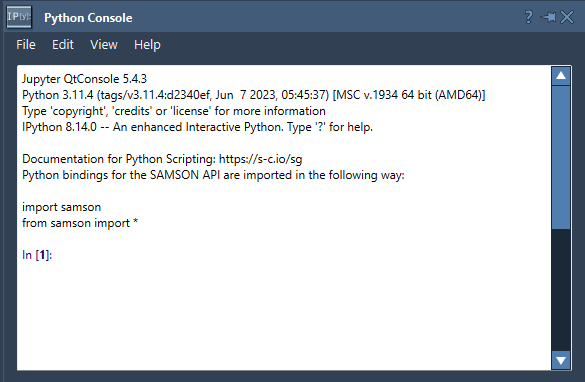
See also: Scripting
Code editor
The Code editor provides the possibility to open and modify text files, including Python scripts. It also provides the possibility to run Python files.
To open the Code editor, click on Interface menu > Code editor or press Ctrl + 9 on Windows and Linux or Cmd⌘ + 9 on Mac.

See also: Scripting
Status bar
The status bar is placed at the bottom of the SAMSON window and shows status messages from SAMSON and SAMSON Extensions.

